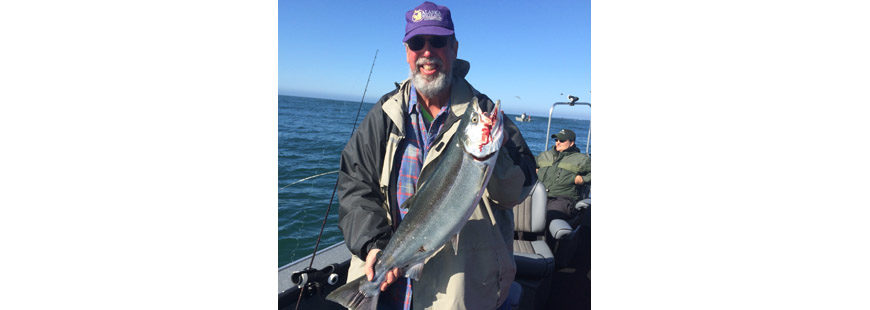It seems that humans are the only members of the animal kingdom who care about drawing arbitrary lines on a map and then making a big deal about who should or shouldn’t stand on either side of those lines. While fish are not afflicted with this trait, they are often the victims of it. The fish are unaware of the differences in rules, regulations, politics, etc. when they change GPS coordinates.
I am a native (Northern) Californian who for 63 years has fished extensively in California, Oregon and southern Washington. On my sojourns north, I have been (falsely) accused of introducing Tui chub into Diamond Lake, littering highways, catching all of your fish, and even buying up all of the local gasoline. I thank heaven that I have an iron-clad alibi for the day Mt. St. Helens erupted. As for driving up real estate prices, to those looking to buy, I am sorry, and to those who are selling, I say, “you’re welcome.” In all honesty, my accusers (who were probably transplanted Californians) can be counted on one hand.
My point being is that those “comments” came from humans obsessed with lines drawn on a map. Fish swimming in the oceans, bays, and rivers in Washington, Oregon, and California are happily unaware of any such delineations. The problem is, that each state, county, and city that they pass through may have different ideas as to how to treat them, and those ideas may sometimes be at odds with each other.
I believe it has been documented that certain salmon caught in the ocean in Oregon were destined for the Klamath River system in California. Sturgeon tagged in the Columbia River have been observed in San Francisco Bay and the Delta. (Most likely there are SF Bay sturgeon in the Columbia River, but it is unknown whether any of them are responsible for driving up real estate prices.) Fishing regulations for salmon and sturgeon are significantly different in Oregon and California, but each affects the other.
I have fished long enough to witness the decline in fisheries in both California and Oregon. Sturgeon, striped bass, and salmon populations in the San Francisco Bay and Delta are fractions of what they were in the 1960’s. I used to fish for salmon at the mouth of the Klamath River in the ‘60’s during August and September. The number of boats and fishermen crammed into a small space were equivalent to what the peak of the Buoy 10 season in Washington looks like today. The amount of salmon caught supported a small shore-side cannery and fish smoking business. A small Coast Guard station was needed to keep the boaters safe. Today, it is a ghost town and the number of salmon swimming upriver are a small remnant of that era.
The decline on the Klamath and other nearby systems has been similar (if not as severe) to declines in Oregon and Washington as well. These declines did not begin or end at state, county, or city borders, but have impacted the fisheries as a whole. It is up to us “humans” to erase those lines on the map and look at an all-inclusive, collaborative solution to the problems.


